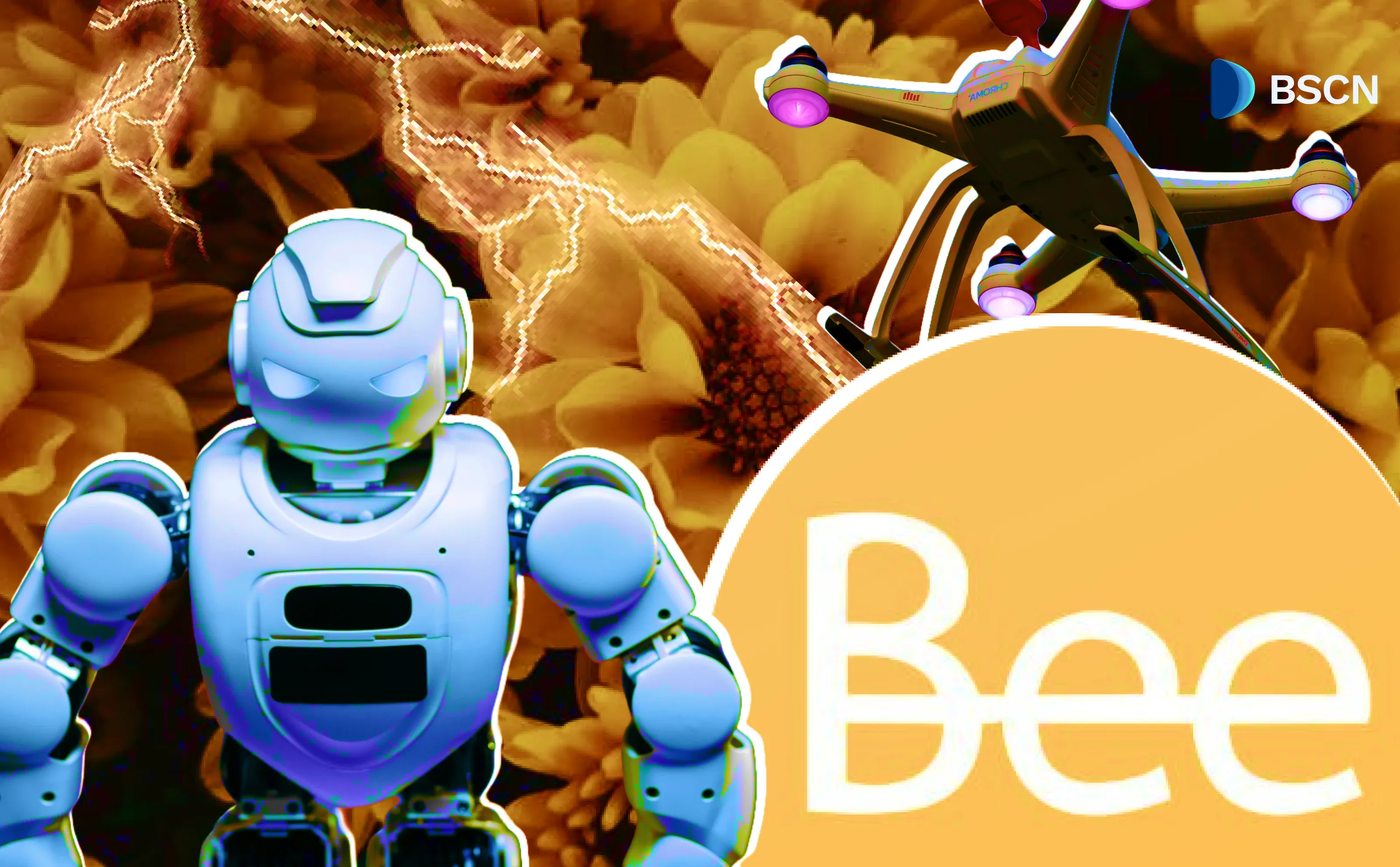POLY
Guest Research: ArkStream on The Future of Lens Protocol

ArkStream Capital’s research team delves deep into leading decentralized social protocol, Lens, examining its place in the decentralized social landscape, its leading applications, as well as its potential limitations.
Larissa Yan
October 1, 2023
Thank you to Larissa, of the ArkStream team, for submitting this guest article…
In the wake of the Ethereum Community Conference (ETHCC), Lens Protocol has made headlines with the announcement of its latest upgrade, Lens V2. This eagerly anticipated release comprises two transformative upgrades that have captured the attention of the blockchain community. The first upgrade, Open Actions, introduces a game-changing feature that enables users and developers to seamlessly integrate external smart contract actions into Lens publications. The second enhancement, a groundbreaking integration with ERC6551, revolutionizes identity management by allowing users to utilize NFTs as their unique identity, binding all account activities within the Lens ecosystem. Remarkably, with one NFT, multiple wallet addresses can now be associated, streamlining user experiences.
Lens and its Competitors
According to the data, Lens Protocol has established itself as the leading SocialFi platform on Ethereum. Compared to its competitors, Lens has demonstrated remarkable growth and user engagement. For instance, Fracaster, another social contract with a similar social graph concept, currently boasts 17,286 active accounts, while Lens Protocol has a staggering 119,241 active accounts, clearly overshadowing its competition.
Another competitor, Cyberconnect, may have a higher number of accounts with over 296,342, but it is worth noting that Lens Protocol sets access control measures, making direct comparisons challenging. Despite Cyberconnect’s larger user base, Lens Protocol outperforms in terms of total transactions, with 21,931,943 transactions compared to Cyberconnect’s 16,249,274 total transactions.
The data clearly highlights that Lens Protocol’s ecosystem is not only attracting a larger user base but also fostering higher levels of activity among its users compared to other social contract platforms. This level of engagement and activity reflects Lens Protocol’s effectiveness in creating a vibrant and thriving community within its decentralized ecosystem. However, Lens protocol are not satisfied with their current achievement but still continuous upgrade to the next stage.
Lens’ Ambitious Movement
Momoka: Lens’ L3

In April, Lens introduced MOMOKA, an innovative Optimistic L3 scaling solution, aiming to process Polygon transactions off-chain, achieving unparalleled scalability while reducing transaction costs. Unlike the conventional rollup process where L2 sends transactions to L1, Momoka takes a different approach. It creates transactions and acquires signatures from wallets, but rather than directly broadcasting these transactions on the blockchain, it leverages the transaction signature and typed data to generate data availability (DA) metadata, treated as a transaction itself. This metadata transaction is subsequently sent to a dedicated DA layer.
Additionally, Momoka offers indexing support, empowering node operators to seamlessly stream and index Lens data without relying on third-party infrastructures. The launch of Momoka gives users the option to store data on Polygon voluntarily, and publications that do not necessitate the robustness of a trustless execution layer can opt not to use the EVM state. As a result, Momoka provides users with the flexibility to tailor their transaction approach according to their specific needs within the Lens ecosystem.
The launch of Momoka offers users the possibility to rely less on Polygon’s services, potentially leading Lens to transition towards a layer one chain and becoming a part of the modular blockchain approach.
Integrating with ERC-6551
ERC6551 allow NFTs to create Token Bound Accounts (TBA), meaning that NFTs can serve as wallet addresses or on-chain accounts, truly achieving NFT-as-wallet functionality. Additionally, ERC-6551 will support the creation of smart contract wallet accounts for current ERC-721 NFTs, using the NFT as the on-chain identity wallet. Under this NFT account, multiple wallet addresses, held NFTs, and ERC-20 tokens can be included, making NFTs genuine representatives of on-chain identity accounts.
From Lens’s perspective, integrating with ERC-6551 and standardizing the rules for using Lens’s NFT is a strategic move. Currently, Lens requires users to possess Lens’s NFT to access its services, and trading Lens’s NFT results in the loss of all account activities and transactions associated with it. By implementing ERC-6551, Lens streamlines the use of its NFT and adds an element of identity, fostering a sense of belonging for users.
Lens believes that the current integration with ERC-6551 not only simplifies NFT usage but also introduces the concept of identity, enhancing the overall user experience. This innovative approach to incorporating identity within NFTs creates a deeper connection between users and the platform.
In Lens’s closed beta, users have already created and accumulated over 3.4 million NFTs, surpassing mere profile pictures or digital assets. These NFTs now have the potential to generate new use cases in the realm of identity, offering a fresh and exciting perspective that is likely to ignite interest in the market.
Promising Projects on Lens Protocol
Currently, there are over 134+ proven and showcased applications thriving within the Lens ecosystem. This diverse range of successful applications has garnered immense interest and support from various communities and developers who eagerly anticipate the promising future of Lens Protocol.
Orb

Orb is a decentralized Social Media Platform which support both mobile and desktop version. Among all the applications we belive in Orb. Orb is a decentralized social app that stands out not only for its exceptional UI/UX on Lens but also for its strong community focus. We believe that a compelling and distinctive community will be the most unique feature of a web3 social app and will be instrumental in attracting web2 users from platforms like Twitter. Orb places significant emphasis on attracting diverse communities originating from web3 while simultaneously creating unique user experiences.
Lenster

Lenster stands as an innovative and pioneering decentralized social media application, firmly rooted in the principles of permissionless interaction. Empowered by the dynamic Lens Protocol, Lenster redefines the digital social landscape by ushering in a novel paradigm of user engagement. Within this groundbreaking platform, users are endowed with the unprecedented ability to curate and reward posts that resonate profoundly with the broader community.
Phaver

Phaver stands as a trailblazing pioneer in the realm of decentralized social media platforms, leveraging the cutting-edge capabilities of Lens technology. As an early adopter of this revolutionary paradigm, Phaver not only redefines the way users engage with digital communities but also introduces an innovative dimension of incentive through its distinctive reward token system.
Lens Protocol’s Limitations
- The Submitter is responsible for validating transaction data and constructing data submissions to Arweave, similar to L2 Sequencers. However, it is not decentralized, and the decision-making authority for the Submitter rests with the Lens official team.
- Lens chose not to follow traditional L2 solutions but instead roll-up and sends data to the DA layer. This decision is driven by the fact that, as a bloat application, Lens data will continue to grow in complexity, unlike financial data that simply require final results. Sending data to the DA layer for processing by Arweave is a temporary solution, not a long-term scaling solution.
- Even though Lens is considered one of the most well-developed protocols with a thriving ecosystem and a dedicated team working to build and improve user experiences, it currently primarily attracts blockchain users. Lens struggles to attract new users. However, some non-blockchain-based social contracts have successfully attracted a large number of new users through their low entry barriers and smooth user experiences.

In conclusion, the Lens Protocol stands as a compelling contender due to its inherent technological advantage, rooted in a robust commitment to decentralization. While notable social protocols like Nostr and Mastodon have amassed substantial user bases without relying on blockchain technology, Lens Protocol’s distinctiveness lies in its genuine support for decentralization. The example of Nostr underscores the significance of a decentralized architecture that eliminates the need for users to grapple with complex blockchain concepts. Nostr’s elegant system, featuring clients and relays, grants users effortless access to private and public keys, fostering an environment primed for expansion and the creation of diverse applications.

Yet, the recent wave of attention sparked by the innovative exploits of visionaries like Vitalik and Elon on Twitter could potentially realign the preferences of native Web3 users, prompting them to explore alternative promising social protocols. In this evolving landscape, Lens Protocol faces the challenge of maintaining its relevance and appeal.
We eagerly anticipate witnessing how Lens will position itself in this competitive landscape.
About ArkStream
ArkStream is a 50M early-stage VC founded by crypto natives from MIT, Stanford, Tencent, Google, Blackrock, with 80+ portfolios including Sei Network, FLOW, The Graph, AAVE, Polkadot, Pocket, Republic, and more.
Website: http://arkstream.capital
Disclaimer
Author

Larissa Yan
Larissa is a dedicated researcher, where she specializes in the fascinating world of SocialFi and the application layer within the web3 space. With a profound passion for the cryptocurrency ecosystem, Larissa's work plays a pivotal role in assisting developers to sculpt the future of this dynamic field. Linktree: https://linktr.ee/larissacrypto
Latest News
Crypto Project & Token Reviews
Project & Token Reviews
Comprehensive reviews of crypto's most interesting projects and assets
Learn about the hottest projects & tokens







